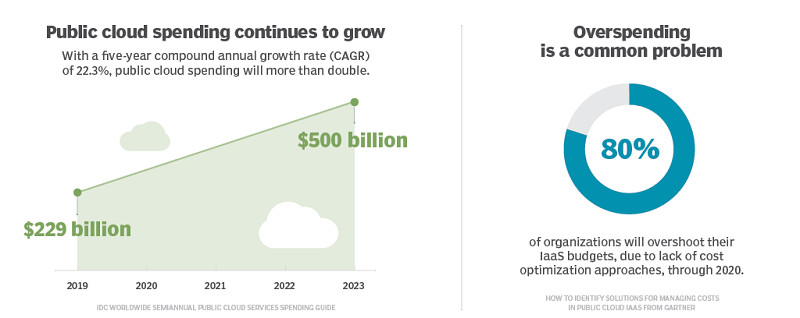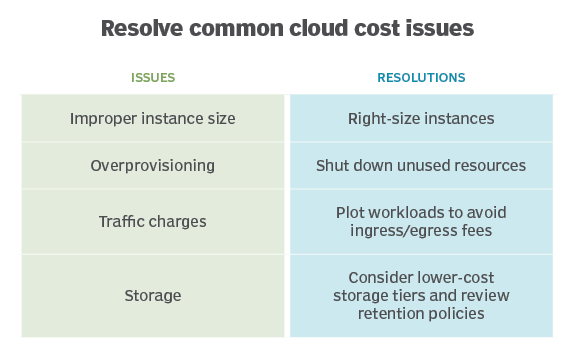Public cloud pricing is typically billed on a pay-per-use structure in which cloud users pay only for the resources they consume. In many cases, this helps reduce IT expenses, since an organization no longer needs to purchase and maintain physical infrastructure for those parts of its business it deploys to a public cloud IaaS. Also, a company can account for public cloud expenditures as operational or variable costs rather than capital or fixed costs. This can provide more flexibility to the business, as these operational spending decisions typically require less intensive reviews or budget planning.
However, it's easy to overspend in the cloud and erase those benefits because it can be difficult to accurately track cloud service usage in the self-service model. Common public cloud cost pitfalls include over-provisioning resources, failure to decommission idle workloads and unnecessary data egress fees. In addition to these cost challenges, public cloud providers have complex pricing models with rates that vary by region and service. Failure to understand a provider's pricing model can cause hidden costs to drive up the bill.

Organizations must factor in all the components that make up their cloud computing spend. This includes costs for application migration, data transfer, storage, and resource consumption, along with the products to manage and maintain the environment.
Cost optimization strategies
To rein in cloud costs, adopt tools and strategies that estimate costs and identify spending patterns. Cloud providers offer pricing calculators and cost monitoring tools, such as Techcity tariff table.
Gain a solid understanding of your chosen cloud environment to help right-size resources, and pay only for what you need. Also, explore providers' discount programs, such as cheaper alternatives to on-demand resources. For example, Techcity offer reserved instances at a lower price, in exchange for commitment to use a certain amount of capacity within a specified time period.
Autoscaling is another way to keep costs down. Autoscaling features adjust application scale to meet demand, which avoids paying for unnecessary capacity. Proper visibility into the cloud environment also helps IT teams identify and shut down idle workloads to avoid paying for unused resources and prevent cloud sprawl.
Enterprises should consistently monitor their cloud bill and reevaluate deployment models to ensure the most cost-efficient approach. For example, an organization with high data egress fees can work on limiting data transfers.


